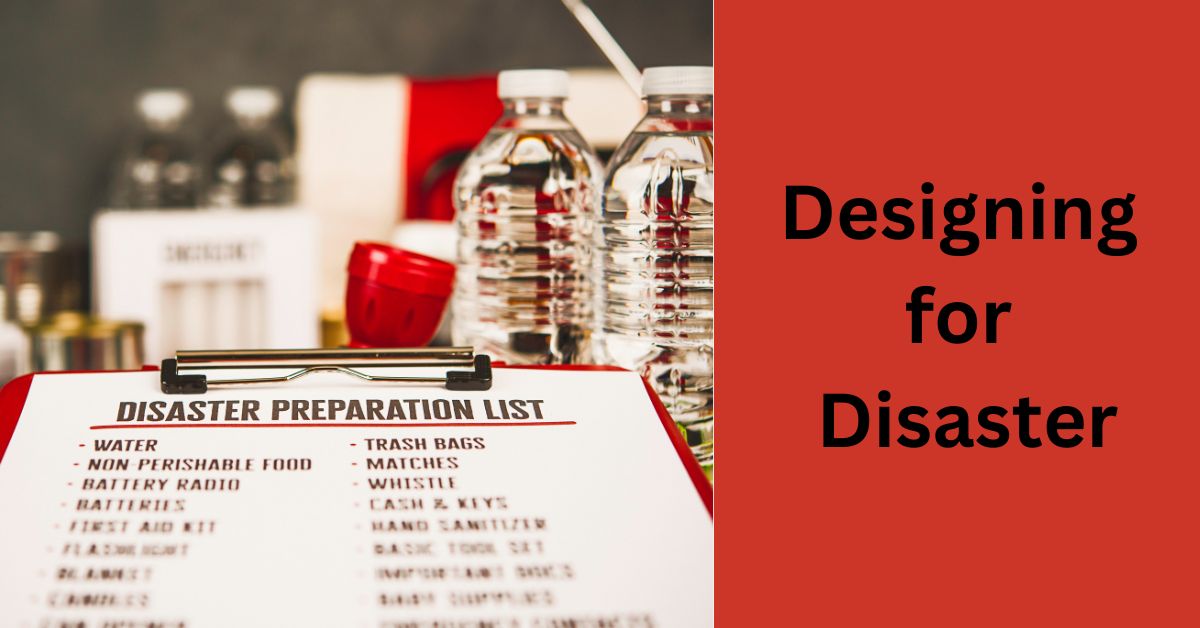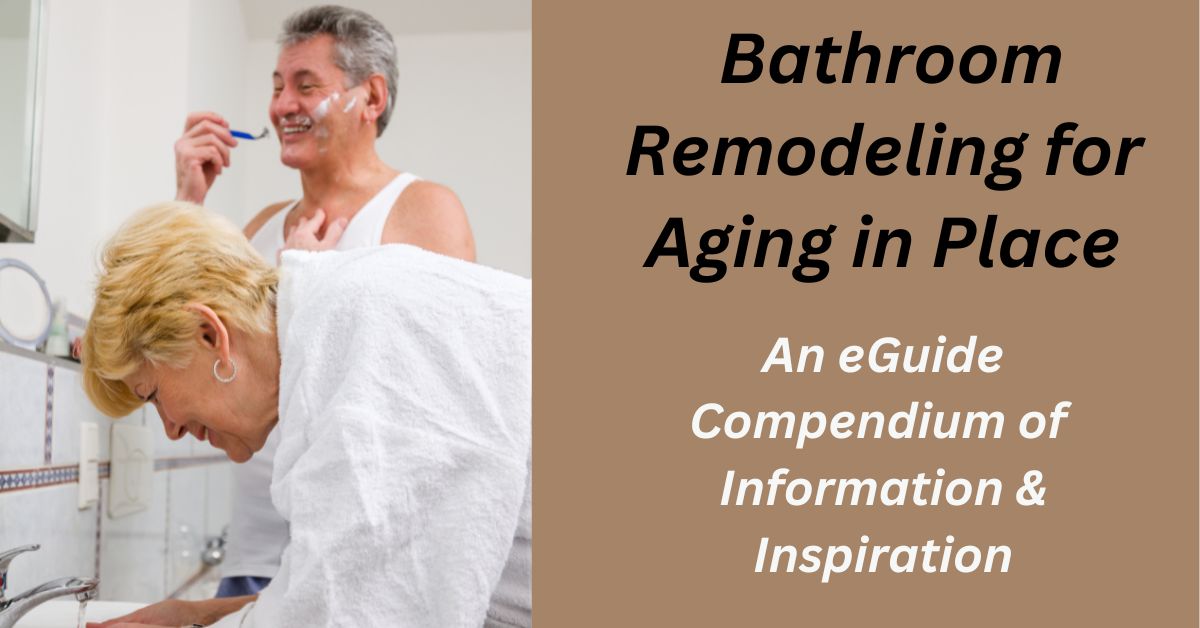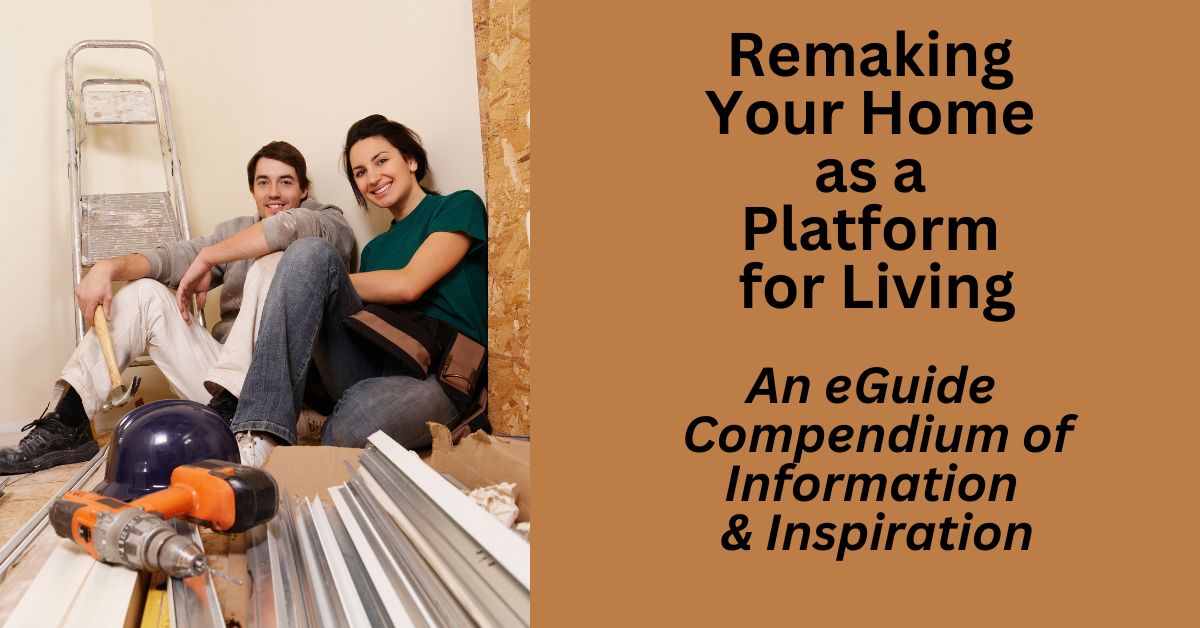Table of Contents
Note: If you came to this post designing for disaster through a random search, please click on this parent page and our home page for more context.
Defining Disaster
By “disaster” we mean what happens to us and our home in case of emergency. By this, we mean hurricanes and tornadoes; earthquakes; wildfires; floods; and man-made events.
So what does disaster preparedness have to do with home remodeling? It’s about planning ahead. We bring emergency preparedness up in the context of remodeling because it can or should affect how we plan our remodeling project.
Disaster preparation can affect the home’s physical structure and how parts should be laid out, modified, or organized. This especially includes providing for the storage and even concealment of supplies.
We have already covered some elements of this in related posts. But here we continue with specificity as to the risks associated with the disasters mentioned earlier.
- Related post: Home Accident Prevention
- Related post: Home Defense
Assessing Your Home’s Vulnerabilities
The first step in this kind of emergency preparedness is identifying risk. And by this, we mean the primary external risk of the disasters we could face.
But we also mean the secondary internal risk that might be heightened by the impact of the external risk on any deficiencies in your home, such as poor structure, roofing, plumbing, and electrical systems. These can make the impact of the external risk much greater.
Assessing External Risk
Depending on where you are in the country you may or may not be vulnerable to the natural disasters of hurricanes and tornadoes, earthquakes, wildfires, or; floods. You need to make your own assessment of that.
FEMA has a map assessing these kinds of risks that you might find helpful. But always remember that “low risk” is not the same as “no risk.”
Everyone is at risk of man-made disasters to some degree. These are disasters that are caused in whole or part by human intent or failure. And these range from crime and civil disorder at one extreme to power, water, and gas utility outages at the other. Of course, utility outages can also be the result of natural disasters.
Assessing Internal Risk
If you are concerned about deficiencies in your home, such as poor structure, roofing, plumbing, and electrical systems that can increase your risk, you should get advice from the appropriate professionals. Their recommendations should be addressed in your remodeling plan.
Build Resilience into Your Remodeling Plan
There are things you can do to make your home safer, more secure, and more resilient in the face of disaster. And you can build these into your remodeling plans. Here is a list of things to consider, beyond what we have covered elsewhere on this site:
- Add an emergency water supply or backup water storage system.
- Add a backup heating system, propane heater, or wood-burning stove.
- Add a backup cooking system, such as a propane or charcoal grill.
- Create a designated storage space for emergency supplies, including water, non-perishable food, first-aid kits, flashlights, and other essentials. These don’t have to be inside the home.
- Add a backup sump pump in case of flooding.
- Design landscaping to reduce the risk of fire near your home. Create a fire barrier.
- Install a backup communication system, like ham radio, two-way radio, or satellite phone. Consider adding a landline in case cell towers go down.
- Install impact-resistant glass or storm shutters for protection against flying debris in high winds.
- Consider a solar water heating system.
- Consider a backup sewage system, such as a composting toilet.
- Consider a backup generator and/or solar-powered system with a battery pack.
It can make more sense to include these things in your remodeling plan, rather than add them later when it might be too late. We’ll go into more detail with some of these.
Natural Disaster Preparedness
Whether you should design for earthquake, flood, or wind damage from hurricanes and tornadoes, depends on the region of the country you are in. In many cases, it is likely that some measure of protection has already been built into your home by local building codes. So some of the measures below may be unnecessary. And at this point, they may even be impractical.
Earthquakes
Earthquake preparedness can include structural seismic measures like:
- Foundation reinforcement, including strengthening basements and crawl spaces.
- Roof reinforcement
- Adding shear walls and bracing
- Adding tie-downs
- Securing window, door, and roof connections. Adding film to make windows shatterproof.
Additional measures include automatic gas valve shutoffs, flexible gas, and water connectors, and securing heavy furniture and appliances to walls
Hurricanes and Tornadoes
Windstorm preparedness protects the home against high wind and debris impact. It includes measures like:
- Roof reinforcement with hurricane clips or straps to prevent it from lifting off.
- Impact-resistant windows and doors
- Pre-drilling for storm shutter and plywood sheet installation (together with having plywood sheets on hand)
- Securing outdoor items like patio furniture and BBQ grills to prevent them from becoming airborne.
Flood
Flood preparedness includes structural and other measures. These include:
- Putting the home on a raised foundation
- Using flood-resistant materials such as concrete, stone, brick, pressure-treated lumber, steel framing, and closed-cell foam insulation in vulnerable areas.
- Using water-resistant materials in the lower levels of the house
- Installing flood vents to allow the free flow of water through the house to prevent structural damage
- Creating drainage around the house to prevent ponding and take water away from the house
- Installing sump pumps, battery-powered backup pumps, and hand pumps
- Elevating electrical and mechanical systems above flood levels
- Backflow prevention valves to prevent sewage backup
Wildfires
Wildfires are exceptionally dangerous to life. And the first thing you should have is an evacuation plan to get you, your family, and important documents away safely and quickly.
But there are other measures you can take to combat wildfires:
- Water storage: Have a minimum of 5,000 gallons of water storage available to fight small fires, together with hoses and pumps. The tanks should be in a fire-protected location.
- Create defensible space: Keep vegetation away from the home. Remove dead and dry vegetation.
- Firewise construction: This includes non-combustible roofing and fire-resistant siding.
- Fire-safe landscaping: Use fire-resistant plants and trees to form a buffer zone around the home, And irrigate it regularly.
- Storage: Keep flammable items like propane tanks well away from the home.
Safe Rooms & Shelters
We covered safe rooms generally elsewhere. But in designing your safe room you should pay attention to the types of natural disasters that you are at risk for.
- Related post: Home Defense
Using a safe room for sheltering in place assumes a decision that you have decided to stay rather than evacuate. And of course, your safe room or shelter needs to be adequately supplied.
Medical Supplies
Medical supplies should include:
First aid kit: This contains immediate-use essential supplies, such as bandages, gauze, adhesive tape, antiseptic swabs, pain relievers, splints, wound irrigation, allergy medication, and emergency contacts. It should be part of your grab-and-go supplies.
Special medical needs: Provide necessary equipment like oxygen tanks, insulin, and medical alert devices for family members with special needs.
Transportation: Special needs may require a wheelchair and stretcher.
First aid: Have family members trained in first aid and CPR. They should also know how to transport a sick or invalid family member safely.
Water & Food Storage
An emergency may limit your access to adequate food supplies and clean water. So here are measures you can take to prepare:
Water: You should have on hand at least one gallon of water per person per day for a minimum of three days. Keep the water in food-grade containers in a cool, dry place and away from sunlight. Rotate it and replace it every six months.
Water treatment: Water treatment may be required in case of contamination. Use purification tablets or fine filtration
Food: Have a supply of non-perishable food items, including canned goods, dried fruits and vegetables, peanut butter, and crackers
Emergency cooking: Non-perishable food items do not require cooking. But if you are using up food in your refrigerator and freezer, have emergency cooking equipment on hand. This can be a simple butane tabletop burner, a BBQ, or a firepit.
Hygiene: Proper hygiene is very important in emergencies. Keep a supply of soap, hand sanitizer, and toiletries. Designate an area in your yard for waste disposal, should that become necessary.
Mental preparedness: A disaster can be very stressful, especially if it lasts a long time. Be ready to help your family with meditative stress management.
Evacuation Planning
In a disaster situation, you are faced with the decision to stay or go. If your decision is to go you will need to have already had an evacuation plan in place. And this plan will have anticipated the kinds of emergencies that you will be escaping from. The plan will include:
- Identification of safe exit routes
- Designated meeting place away from the home at which to gather
- A grab-and-go emergency kit that has already been prepared and is easily accessible. This will include food, water, first aid supplies, emergency tools, cell phones, and essential documentation.
Extended SHTF Long-Term Emergency
A passing natural disaster is one thing. But preparing for a long Sh*t Hits The Fan emergency is quite another. Here we are talking about potentially many months of forced self-sufficiency. This could be the result of civil unrest or economic collapse.
Everything we have discussed above comes into play but in a different and unpredictable way. So we have to prepare as best we can. Therefore we would expand our emergency preparedness as follows.
Security and Self-Defense
Elsewhere on this site, we discuss security in the context of ordinary home defense. And in that scenario, we consider firearms optional. But in the SHTF context; where we may see the complete breakdown of law and order, we consider firearms essential. But this is an individual decision.
- Related post: Home Defense
Water and Food Storage
In the SHTF scenario, you should have a minimum of three months of food and water stored at your home. This includes long-term food such as canned food, condensed milk, dried milk, dehydrated food, freeze-dried food, MREs, and bulk food like rice, beans, and grains. You can store these in 5-gallon buckets. Use Mylar bags with oxygen absorbers.
Several companies specialize in these types of food. My Patriot Supply is a good one. And you can find similar at Augason Farms on Amazon.
Food Concealment
And, when SHTF, you have to be prepared to defend your food supply. And a good first step is to conceal it. For example:
- Use the occasion of your remodel to build storage behind false walls or in a crawl space.
- Use fake containers in the garage. Put food in paint buckets.
- Dig holes in your yard big enough to drop plastic trash bins in. Line the bins with heavy-duty bags and store food inside. Put the trash bin lid back on and bury it.
Self-Sufficiency
This includes:
- Gardening: Growing your own food. Keep a vegetable garden (make sure you have a supply of seeds). Can or dry the produce.
- Livestock: Raise chickens for eggs and meat. Raise rabbits.
- Hunting and fishing: Learn how to do it. Back to nature and another reason to have firearms.
- Rainwater Collection: Keep barrels and cisterns on your property.
Medical Supplies
Aside from the first aid and basic measures we outlined earlier, be sure to have a long-term supply of essential prescription medications.
Conclusion
By incorporating emergency preparedness into your remodeling plans, you can create a safe and resilient living space for you and your family. And you will be able to survive and thrive through a range of natural and man-made disasters.







Leave a Reply